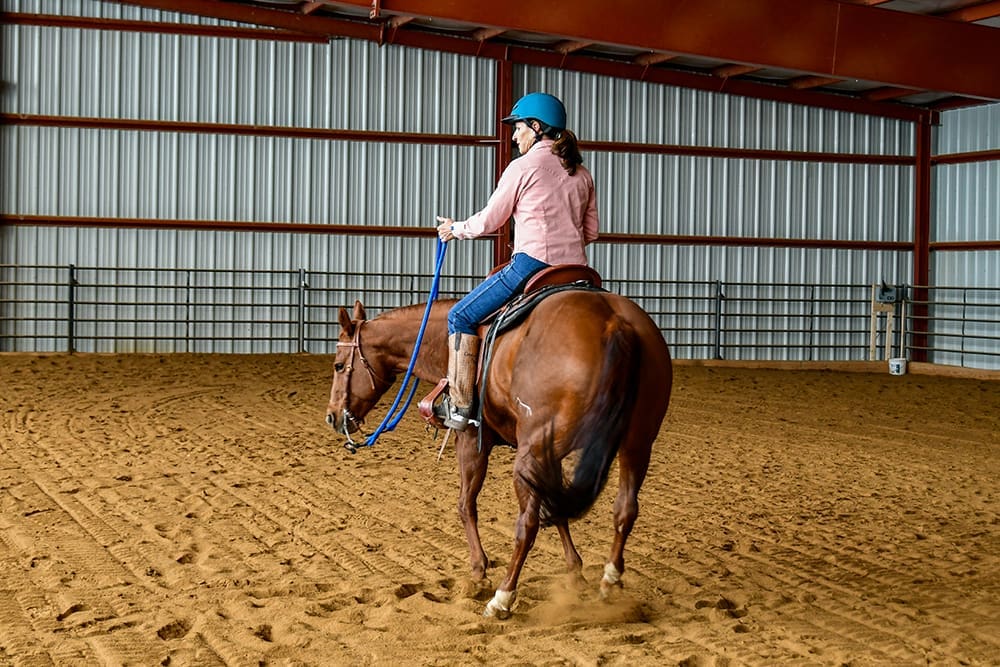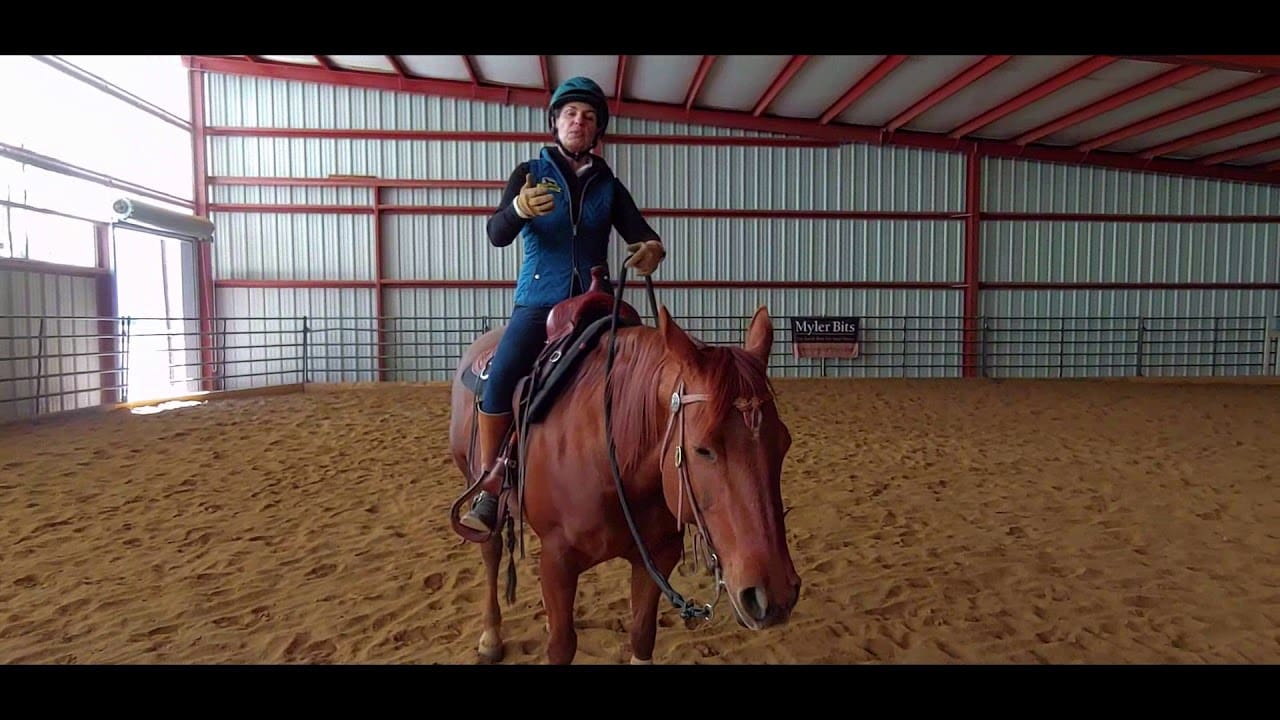Question Category: Riding Skills
Question: I ride an Arabian who has a very bouncy trot that I just can’t sit to. I ride in an event saddle that has a somewhat deep seat, but when I try to sit to the trot, my lower leg becomes unstable and bounces around. Do you have any ideas for exercises that might help me improve my sitting trot?
Answer: The sitting trot is one of the most difficult skills a rider must learn, especially if you are riding a horse with a bouncy trot or a trot with a lot of suspension. First let’s take a look at what might be causing your difficulties then we’ll take a look at some possible solutions.
The most common faults I see in riders learning to sit the trot are tense muscles/locked joints, a closed pelvis and pinching or gripping with the knees. Your joints, especially your hips, knees and ankles, are major shock absorbers that allow you to absorb the movement in the horse’s back. Anytime you tense a muscle, it locks a joint somewhere in your body and locked joints lead to bouncing.
Along the same lines, a closed pelvis prevents your hips from opening and closing to absorb the lift in the horse’s back when he trots or canters. An open pelvis refers to the angle between your hip and thigh; sucking your belly button in and rocking back on your seat bones opens this angle; arching your back and rolling forward onto your crotch closes the pelvis. It is important when you are riding to have your pelvis as open as it can be so that your lower back is flat, all of your weight is on your two seat bones and there is no weight on your crotch. Your hips will lift and open then drop down with each stride. Closing your pelvis or leaning forward will make this motion impossible. To open your pelvis, use your abdominal muscles, not your buttocks muscles. In fact, it is the psoas muscles that you use to open and close your pelvis. To feel these muscles, try coughing while sitting in a chair. You’ll feel your weight rock back on your seat bones and your pelvis open.
Pinching or gripping with the knees in an effort to hold on leads to locked joints and causes your pelvis to close and your heels to come up. When your heels come up, it causes you to push on the stirrup, which pushes you up and out of the saddle. Sometimes it helps to open your knees just a little bit to prevent gripping and to help open the pelvis.
To help you learn to sit the trot, here are a few exercises that you can do. First, make sure that you ride in correct position sitting vertical with your ear-shoulder-hip-heel in alignment, your pelvis open, your weight stretching into your heels, all of your weight on your two seat bones and with relaxed muscles and loose joints. Secondly, try riding without your stirrups. This will prevent you from pushing on the stirrup and pushing your weight up and out of the saddle. Finally, do exercises off the horse that will help you have better control of your abdominal muscles. Pilates and Yoga exercise classes are very beneficial to equestrians. Finally, there is lots of information on my website that explains in greater detail how to ride in balance and rhythm with the horse.
Julie Goodnight
Copyright ©Julie Goodnight 2000. All Rights Reserved. No part of this website may be reproduced without owner’s express consent.



